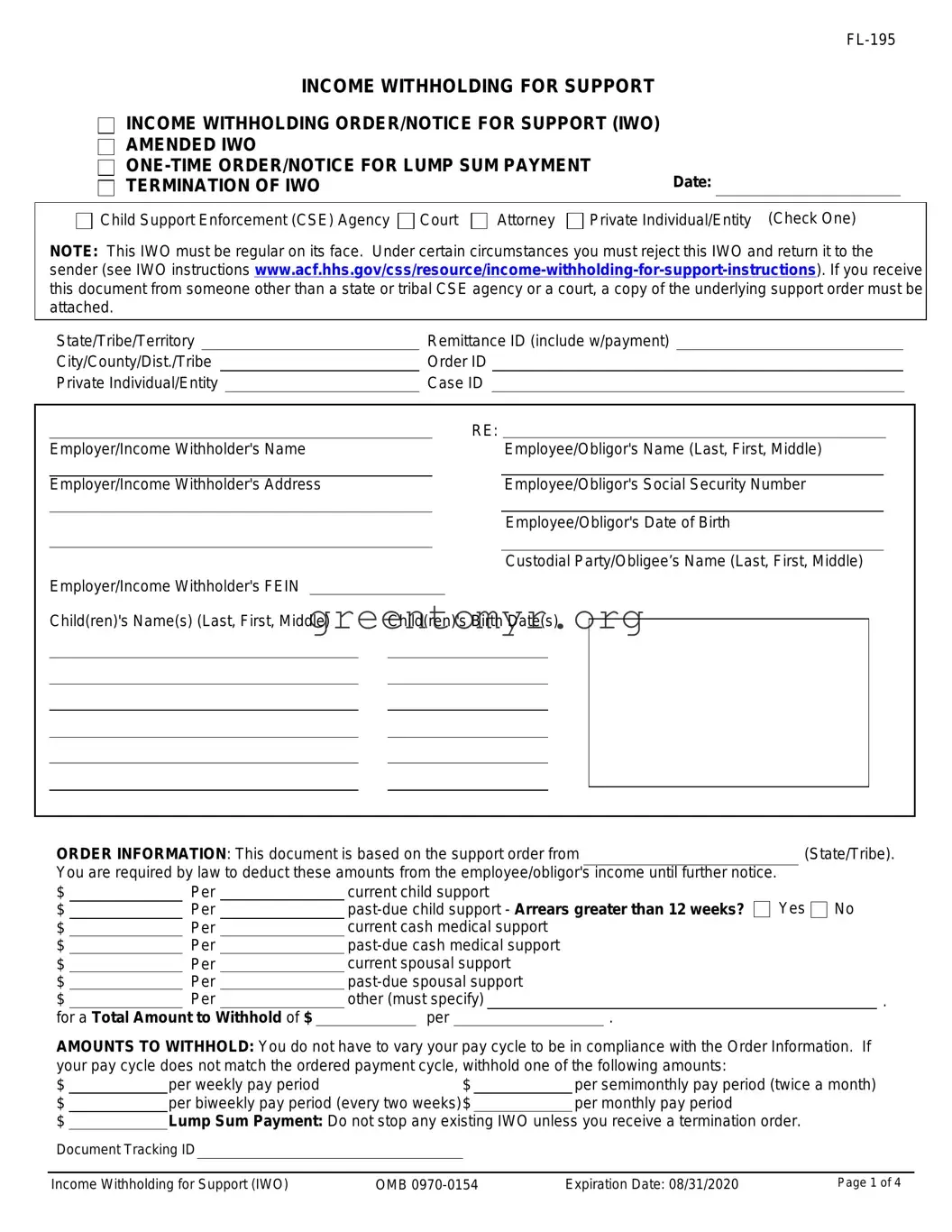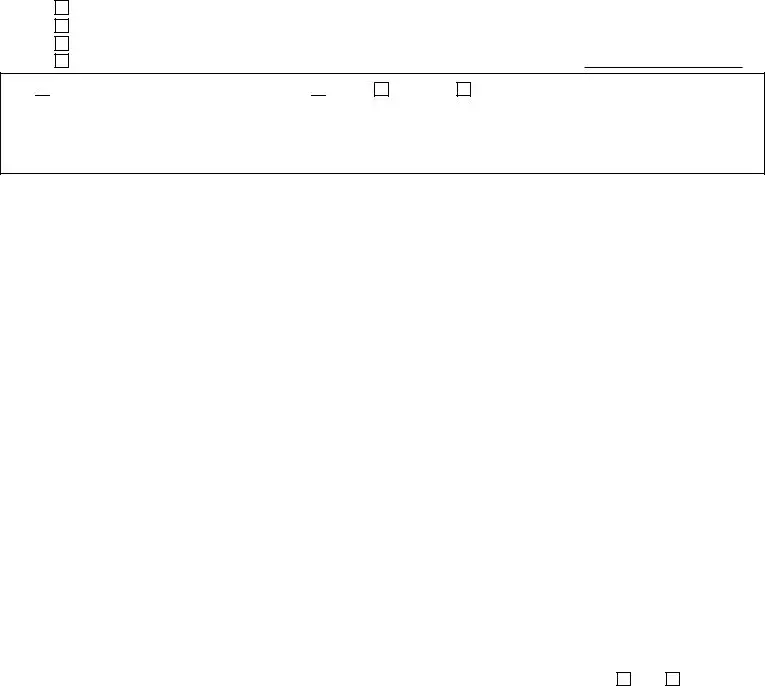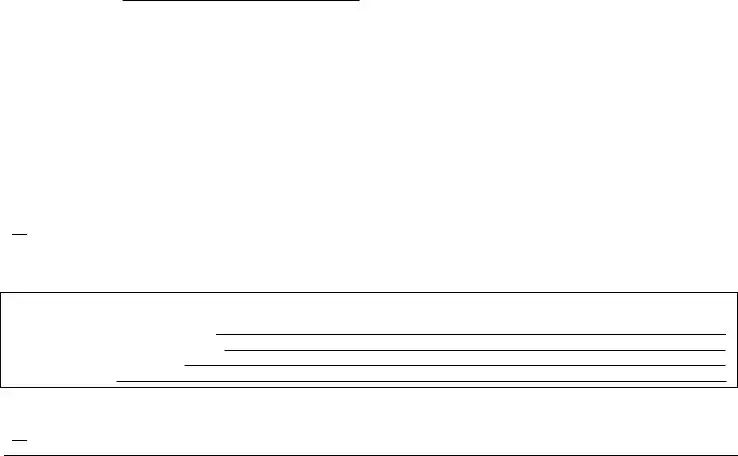FL-195
Employer's Name: |
|
|
|
|
|
Employer FEIN: |
|
|
|
|
|
|
|
Employee/Obligor's Name: |
|
|
|
|
|
|
|
|
SSN: |
|
Case Identifier: |
|
|
|
|
|
Order Identifier: |
|
|
|
|
|
|
|
|
|
|
|
|
|
|
|
REMITTANCE INFORMATION: If the employee/obligor's principal place of employment is |
|
|
(State/Tribe), you must begin withholding no later than the first pay period that occurs |
|
|
days after the date |
of |
|
|
. Send payment within |
|
business days of the pay date. If you cannot withhold the full amount of |
support for any or all orders for this employee/obligor, withhold |
|
|
% of disposable income for all orders. If the obligor is |
a non-employee, obtain withholding limits from Supplemental |
Information. If the employee/obligor's principal place of |
employment is not |
|
|
(State/Tribe), obtain withholding limitations, time requirements, |
and any allowable employer fees from the jurisdiction of the employee/obligor's principal place of employment. State- specfic withholding limit information is available at www.acf.hhs.gov/css/resource/state-income-withholding-contacts- and-program-requirements. For tribe-specific contacts, payment addresses, and withholding limitations, please contact the tribe at www.acf.hhs.gov/sites/default/files/programs/css/tribal_agency_contacts_printable_pdf.pdf or https://www.bia.gov/tribalmap/DataDotGovSamples/tld_map.html.
For electronic payment requirements and centralized payment collection and disbursement facility information [State Disbursement Unit (SDU)], see www.acf.hhs.gov/css/employers/employer-responsibilities/payments.
Include the Remittance ID with the payment and if necessary this locator code: |
. |
|
|
|
|
|
Remit payment to |
California State Disbursement Unit |
(SDU/Tribal Order Payee) |
at |
P.O. Box 989067, West Sacramento, CA 95798-9067 |
(SDU/Tribal Payee Address) |
|
|
|
|
|
 Return to Sender (Completed by Employer/Income Withholder). Payment must be directed to an SDU in accordance with sections 466(b)(5) and (6) of the Social Security Act or Tribal Payee (see Payments to SDU below). If payment is not directed to an SDU/Tribal Payee or this IWO is not regular on its face, you must check this box and return the IWO to the sender.
Return to Sender (Completed by Employer/Income Withholder). Payment must be directed to an SDU in accordance with sections 466(b)(5) and (6) of the Social Security Act or Tribal Payee (see Payments to SDU below). If payment is not directed to an SDU/Tribal Payee or this IWO is not regular on its face, you must check this box and return the IWO to the sender.
If Required by State or Tribal Law:
Signature of Judge/Issuing Official:
Print Name of Judge/Issuing Official:
Title of Judge/Issuing Official:
Date of Signature:
If the employee/obligor works in a state or for a tribe that is different from the state or tribe that issued this order, a copy of this IWO must be provided to the employee/obligor.

 If checked, the employer/income withholder must provide a copy of this form to the employee/obligor.
If checked, the employer/income withholder must provide a copy of this form to the employee/obligor.
ADDITIONAL INFORMATION FOR EMPLOYERS/INCOME WITHHOLDERS
State-specific contact and withholding information can be found on the Federal Employer Services website located at
www.acf.hhs.gov/css/resource/state-income-withholding-contacts-and-program-requirements.
Employers/income withholders may use OCSE's Child Support Portal (https://ocsp.acf.hhs.gov/csp/) to provide information about employees who are eligible to receive a lump sum payment, have terminated employment, and to provide contacts, addresses, and other information about their company.
Priority: Withholding for support has priority over any other legal process under State law against the same income (section 466(b)(7) of the Social Security Act). If a federal tax levy is in effect, please notify the sender.
Combining Payments: When remitting payments to an SDU or tribal CSE agency, you may combine withheld amounts from more than one employee/obligor's income in a single payment. You must, however, separately identify each employee/obligor's portion of the payment.
Payments To SDU: You must send child support payments payable by income withholding to the appropriate SDU or to a tribal CSE agency. If this IWO instructs you to send a payment to an entity other than an SDU (e.g., payable to the custodial party, court, or attorney), you must check the box above and return this notice to the sender. Exception: If this IWO was sent by a court, attorney, or private individual/entity and the initial order was entered before January 1, 1994 or the order was issued by a tribal CSE agency, you must follow the “Remit payment to” instructions on this form.



 Child Support Enforcement (CSE) Agency
Child Support Enforcement (CSE) Agency  Court
Court
 Return to Sender (Completed by Employer/Income Withholder).
Return to Sender (Completed by Employer/Income Withholder). 
 If checked, the employer/income withholder must provide a copy of this form to the employee/obligor.
If checked, the employer/income withholder must provide a copy of this form to the employee/obligor.


 This person has never worked for this employer nor received periodic income.
This person has never worked for this employer nor received periodic income.
 This person no longer works for this employer nor receives periodic income.
This person no longer works for this employer nor receives periodic income.